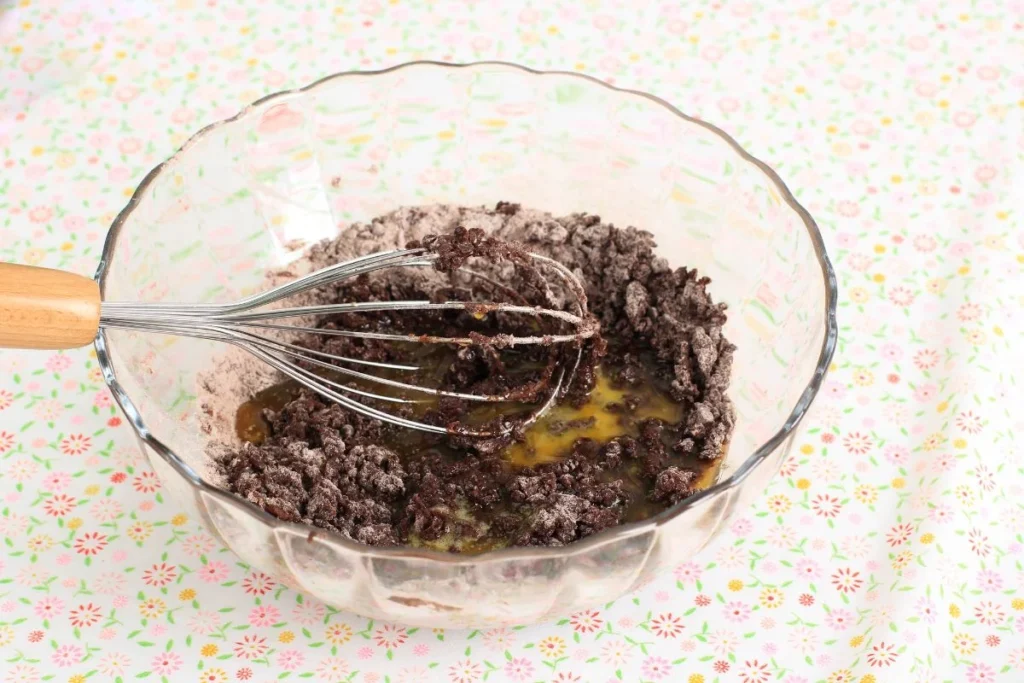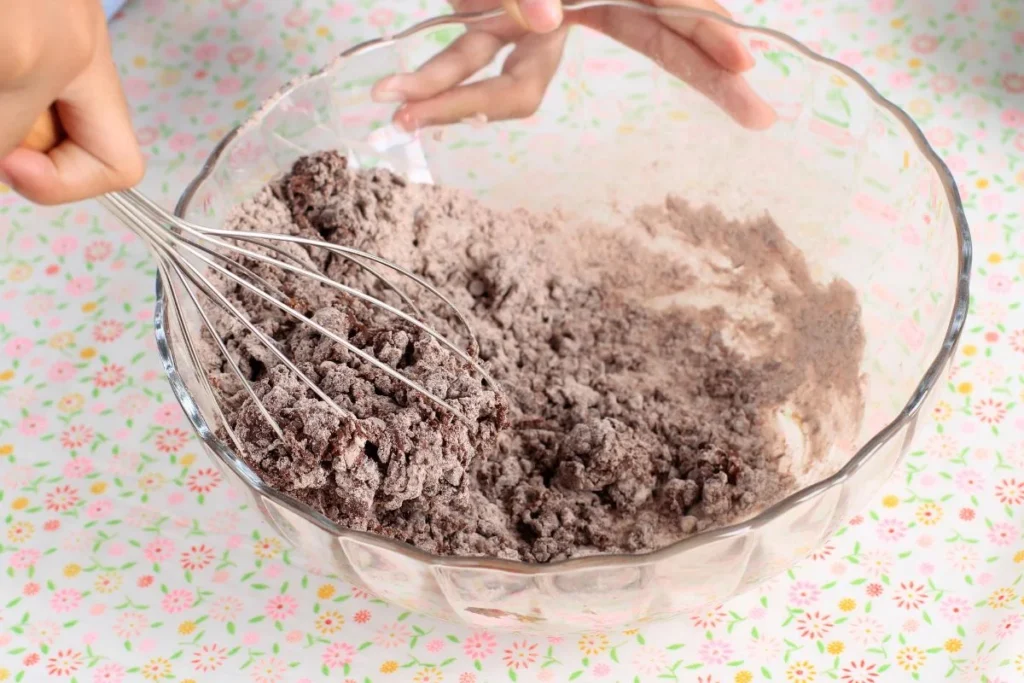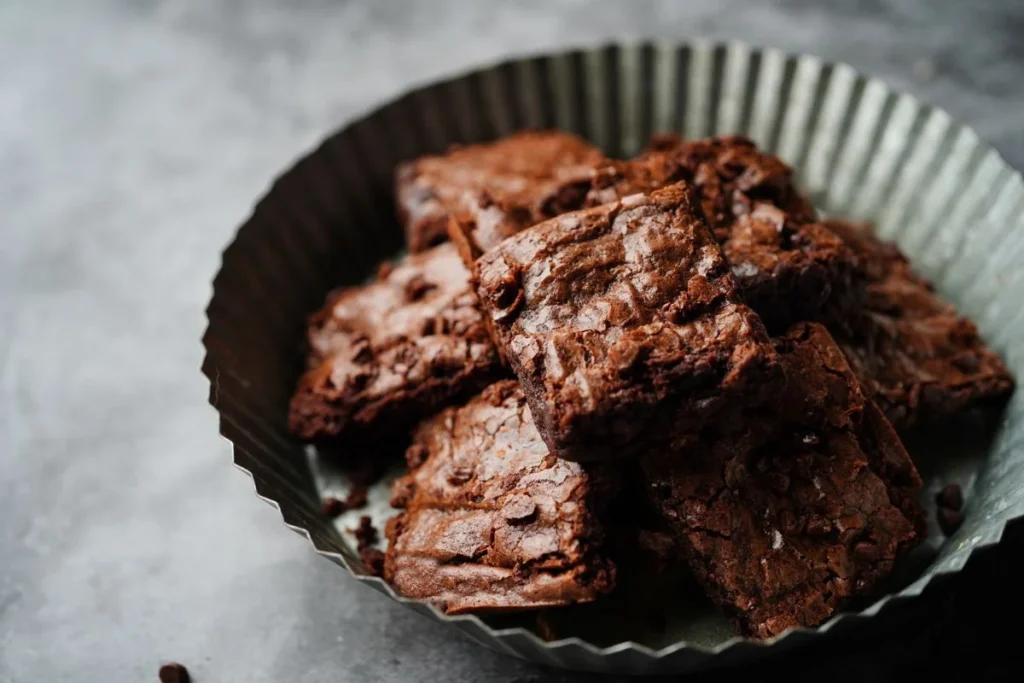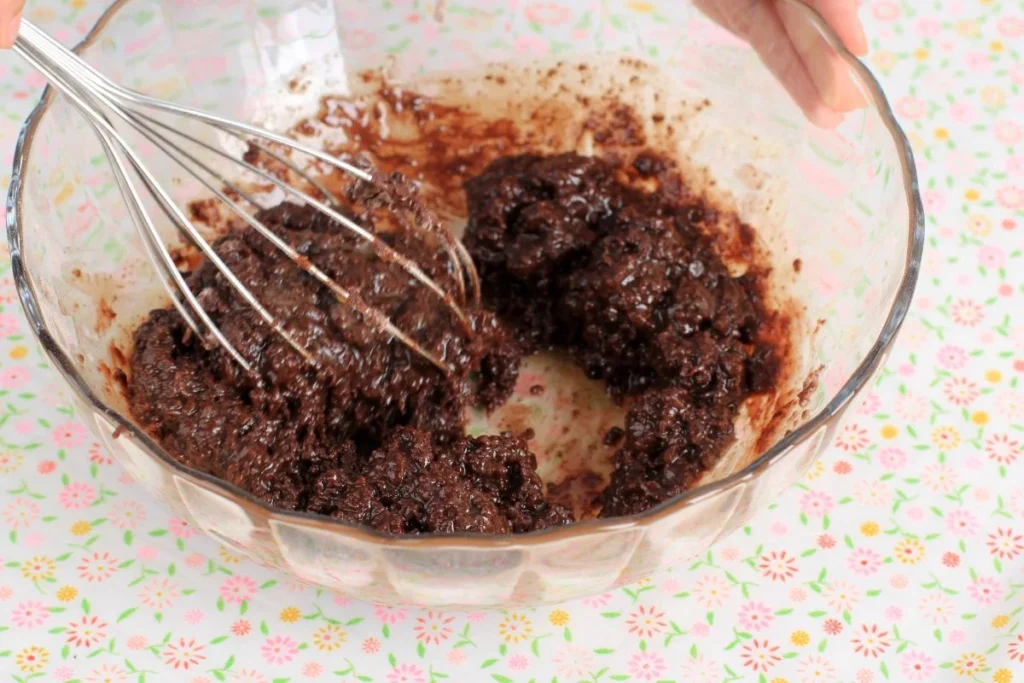
5 Easy Ways to Fix Too Much Water in Brownie Mix
Are you tired of ending up with watery and disappointing brownies? Look no further! In this blog post, we will share with you 5 foolproof methods to rescue your brownies from an overly watery mix.
Whether you accidentally added too much liquid or misjudged the measurements, we’ve got you covered. Our expert tips and techniques will help you salvage your brownie batter and turn it into a batch of delicious, fudgy brownies.
Table of Contents
ToggleSigns of Too Much Water in Brownie Mix
Spotting signs of too much water is key to fixing the problem and making sure your brownies come out moist and delicious. Here are some clear signs that your brownie batter might have too much water:
- Thin Batter: If your brownie mix is more watery than usual, that’s a sign of too much water. A good batter should be thick and gooey, promising a fudgy result.
- Longer Baking Time: If you’re keeping your brownies in the oven longer than usual, it might be because there’s too much water. Extra moisture can slow down the baking process, making it take longer to get the texture you want. This might lead to overcooked edges and a dry inside.
- Not Fudgy Enough: Perfect brownies have a fudgy inside. Too much water can mess with this texture, making your brownies more like cake. If your brownies lack that dense, moist quality of fudgy treats, it’s time to deal with the water issue.
- Ingredient Separation: Look at your batter – if liquids are pooling or you see a clear separation of oil and water, that’s a sign there’s too much water. A well-mixed batter should be smooth and consistent.
- Weird Smell: While baking, a strong smell of raw flour or an unpleasant odor could mean there’s too much moisture. Excess water can mess with the overall aroma of your brownies, telling you that you need to make some adjustments.

3 Common Reasons For a Watery Brownie Mix
Before you start fixing it, it’s essential to know the common reasons behind this problem. This is key to making sure your batch of brownies turns out successful and delicious.
1. Inaccurate Measurements
First off, if you don’t measure your ingredients accurately, you might end up with a watery brownie mix. Baking is like a science experiment, and even a tiny mistake in how much flour, sugar, eggs, or liquids you use can throw off the whole recipe.
Follow the instructions closely, use measuring cups and spoons, and pay special attention when dealing with wet and dry ingredients. This way, you’ll keep the brownie batter at the consistency it’s supposed to have.
2. Overmixing the Batter
Another thing to watch out for is overmixing the batter, a common reason for a watery brownie mix. While it’s important to mix everything well, stirring too much can make too much gluten.
Gluten is a protein that gives structure to baked goods, but too much of it can make your brownies dense and overly moist. To avoid this, gently fold the ingredients until they’re just combined, so your batter keeps that perfect fudgy or cakey texture.
3. Ingredients Temperature
Lastly, the temperature of your ingredients matters for the consistency of the brownie mix. If your butter or eggs are too warm, they might not mix properly, leaving you with a runny batter. Make sure your ingredients are at the right temperature according to the recipe.
For example, using melted butter when it asks for softened butter can change how your brownies turn out. Keeping the right ingredient temperatures will give you a well-balanced batter and, in the end, the perfect batch of brownies.

How to Fix Too Much Water in Brownie Mix in 5 Easy Methods
Now that you know what signs to watch out for and why your brownie mix might end up too watery, let’s check out five simple and effective ways to fix this common problem and make sure your brownies turn out great every time.
Gradual Flour Addition
One straightforward approach to counteract excess water in your brownie mix is to gradually add more flour. Begin by incorporating small amounts of all-purpose flour into the batter until you achieve the desired thickness.
The key here is to add the flour slowly and mix well after each addition to ensure a smooth and evenly distributed consistency. This method not only corrects the water imbalance but also maintains the flavor profile of your brownies.
Add More Dry Mix Ingredients
Another effective method is to balance out the excess water by increasing the quantity of other dry ingredients in the mix. This includes ingredients like cocoa powder, sugar, and baking powder.
By adding a bit more of these components, you can absorb the excess moisture and restore the intended texture of your brownies. It’s crucial to maintain the right balance, so make adjustments gradually and taste as you go to ensure the flavor remains on point.
Use Instant Coffee or Espresso Powder
A surprising yet effective remedy for overly moist brownie mix is the addition of instant coffee or espresso powder. The natural absorbent properties of coffee help soak up excess water, simultaneously enhancing the chocolate flavor of your brownies.
Begin by dissolving a teaspoon of instant coffee or espresso powder in a small amount of hot water before adding it to the batter. This not only rectifies the texture but also introduces a delightful depth of flavor to your brownies.
Incorporate More Eggs
Eggs play a crucial role in the structure and moisture content of brownies. If you find your brownie mix too watery, consider adding an extra egg to the batter. Eggs act as binders and help give structure to the brownies while contributing to their overall moisture.
Crack an additional egg into the mix, beat it thoroughly, and observe the improvement in consistency. This method not only remedies excess water but also results in a chewier and richer brownie.
Bake in Stages
If you’ve already poured the watery batter into the baking pan, don’t despair. You can still salvage your brownies by baking them in stages. Start by baking the brownies for a shorter duration than the recipe suggests.
Check for doneness by inserting a toothpick into the center – if it comes out with moist crumbs rather than wet batter, proceed to bake in shorter increments until fully cooked. This method allows the excess water to evaporate gradually, ensuring your brownies reach the perfect consistency without overcooking.

What Happens If You Bake a Runny Brownie Batter?
When you make brownies and the batter is too thin, it can mess up how they turn out – both in terms of how they look and taste.
Let’s check out what could happen:
- Structure Issues: Brownies need the right mix of wet and dry ingredients to keep their shape. If the batter is too runny, your brownies might end up flat and thin, missing that awesome chewiness and fudginess.
- Longer Baking Time: Thin batter usually means the brownies need more time in the oven. While waiting for them to firm up, the edges might get too crispy, and the middle might stay undercooked. This uneven baking can leave you with brownies that aren’t the perfect combo of crispy outside and moist inside.
- Moisture Loss: Too much water in the batter can make your brownies lose moisture while baking. Instead of the rich, moist brownie you want, you could end up with a dry, crumbly mess – not the indulgent treat you had in mind.
- Changed Flavor: Brownie flavor is all tied up with its texture. If the batter is runny, it can water down the chocolate and other flavors, making the result less tasty. That’s a letdown if you were expecting a super chocolatey treat.
- Tricky Cutting and Serving: Runny brownie batter can turn into a gooey disaster, making it tough to cut and serve. Instead of neat squares, you might get a pile of crumbly brownie bits, making it a real challenge to present them nicely.
How to Fix Watery Brownie Mix without Flour
If your brownie mix has turned out too watery and you’re out of flour, don’t fret – there are alternative solutions to salvage your dessert.
First, assess the consistency of the mix; if it’s overly runny, try incorporating additional dry ingredients like cocoa powder or powdered sugar. These substances can absorb excess moisture and contribute to the desired thickness.
Another effective remedy involves adding crushed nuts or shredded coconut. These ingredients not only absorb excess liquid but also introduce a delightful texture to the brownies. Be cautious with the quantities, as you don’t want to overpower the chocolatey goodness of the brownies.
Consider incorporating extra egg into the mix, as the proteins in the egg can help bind the ingredients and thicken the batter. However, be mindful not to overdo it, as this might alter the taste and texture.
Alternatively, if you have rolled oats on hand, grind them into a fine powder and mix them into the batter. Oats can act as a thickening agent and contribute a subtle nutty flavor to the brownies.

Tips to Prevent Excess Water in Brownie Mix
Making the perfect batch of brownies is all about being spot-on and paying attention to the details, especially when it comes to handling moisture in your brownie mix.
Here are some practical tips to avoid the common problem of having too much water in your brownie batter.
- Get Your Measurements Right: One major reason for overly watery brownie batter is inaccurate measurements. Invest in precise measuring tools and stick closely to the recipe, making sure you have the correct balance of wet and dry ingredients.
- Choose Quality Ingredients: The quality of what you use directly affects how moist your brownies turn out. Go for fresh, high-quality ingredients, and keep an eye on the water content in items like eggs and extracts.
- Mix with Care: Be mindful not to overmix the batter, as that can add too much air and, in turn, more moisture. Mix the ingredients until they’re just combined to avoid ending up with overly wet brownies.
- Consider the Environment: The humidity in your kitchen can impact the moisture in your brownie mix. On humid days, slightly reduce the liquid content in your recipe to account for the extra moisture in the air.
- Watch for Ingredient Reactions: Some ingredients can interact with each other, messing with your brownie mix’s overall consistency. For example, acidic ingredients like yogurt or buttermilk can react with baking soda, causing excessive bubbling and a runny batter.
- Add Liquids Gradually: When pouring liquids into your brownie mix, take your time. Adding liquids too quickly can lead to an uneven distribution, resulting in pockets of excess water. Ensure a smooth incorporation of wet ingredients by adding them gradually.
- Control the Temperature: Before adding ingredients like butter and eggs to the mix, let them come to room temperature. Cold ingredients can mess with the batter’s consistency and potentially cause issues with water content.
- Test Your Batter: Before committing to baking the whole batch, do a small test run. This lets you assess the consistency and make any necessary adjustments to avoid too much water messing with the final product.
Can You Replace Water in Brownie Mix?
When it comes to substituting water in a brownie mix, alternatives can enhance flavor and texture. Instead of water, consider using ingredients like milk or buttermilk for a creamier result. This adds more richness to the chocolatey goodness of the brownies.
Another option is using brewed coffee, which amps up the chocolate flavor without giving it a coffee taste. If you want a healthier option, go for applesauce or yogurt instead of water. They add moisture while cutting down on the fat.
Playing around with different liquids lets you customize based on what you like. Just keep in mind that swapping out the water might mean tweaking the baking time or consistency a bit, so keep an eye on those brownies while they’re in the oven.
Frequently Asked Questions About Brownie Consistency
Can I use oil instead of water in brownie mix?
Yes, you can replace water with oil for added richness. However, be mindful of the overall moisture content and adjust other ingredients accordingly.
Why do my brownies turn out cakey and dry?
Cakey brownies may result from overmixing or using too much flour. Adjust your mixing technique and measure ingredients precisely for a fudgier outcome.
What role does baking soda play in brownie consistency?
Baking soda can contribute to a chewier texture in brownies. Use it sparingly to avoid altering the balance of ingredients.
Conclusion
Facing problems in the kitchen is just part of the baking journey, and putting in too much water in your brownie mix happens to everyone. But don’t worry, with these five simple and practical fixes, you can save your brownie batter and still get a tasty end result.
Whether you decide to adjust the dry ingredients, add extra goodies, change up baking times and temperatures, or split the batter, there’s always a way to rescue your baking adventure and enjoy some delicious homemade brownies.
Just remember to stay calm, be creative, and turn a potential kitchen mishap into a cooking triumph. Happy baking!
Lindsey Mackenzie
About me
Hi there! I’m Lindsey Mackenzie, the founder of Bake Smartly. Baking has been my passion since childhood, growing up in my father’s bakery. With Bake Smartly, I’m excited to share my love for all things sweet and savory. Join me on this delicious journey as we whip up scrumptious treats and sprinkle joy into every bite!






